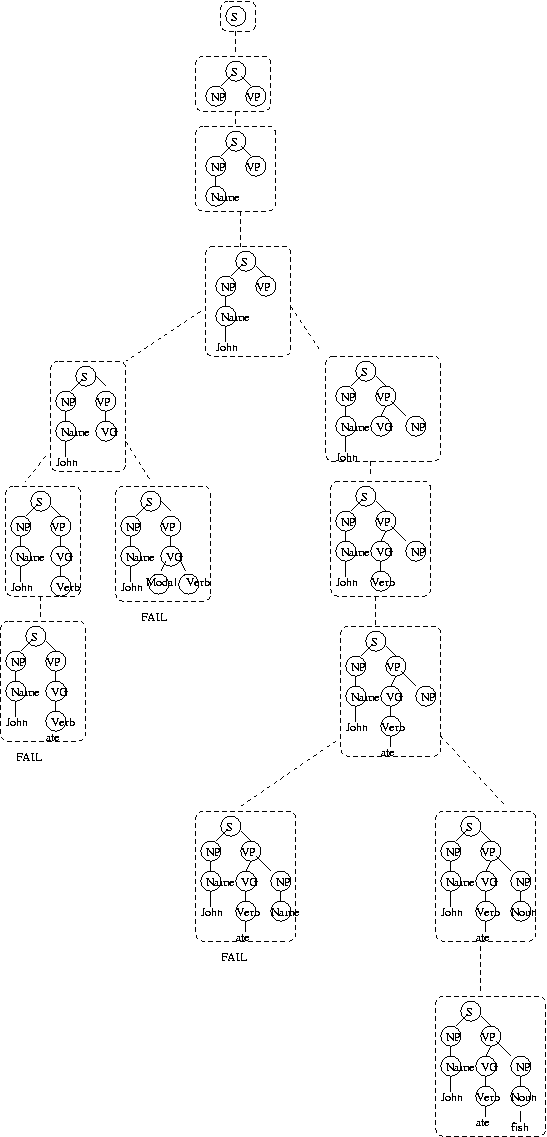
Input: A sentence Q and a grammar G.
Output: A parse tree for Q in G.
A recursive descent parser for Q in G is a depth-first search through the following state space:
State: A partial parse tree. Some of the words at the start of of the sentence may be leaves of the tree.
Operator: Let S be a state. The successors to S are formed as follows: Let N be the leftmost node of T that is not a word.
Goal state: A tree T whose leaves are exactly the words in S.
Start state: A state S whose tree is just the root labelled S and whose sentence is Q.
Grammar:
S -> NP VP
NP -> Name
NP -> Noun
VP -> VG
VP -> VG NP
VG -> Verb
VG -> Modal Verb
Lexicon:
ate -- Verb
can -- Modal, Verb, Noun
fish -- Noun, Verb
John -- Name.
Sentence: John ate fish.
State space
